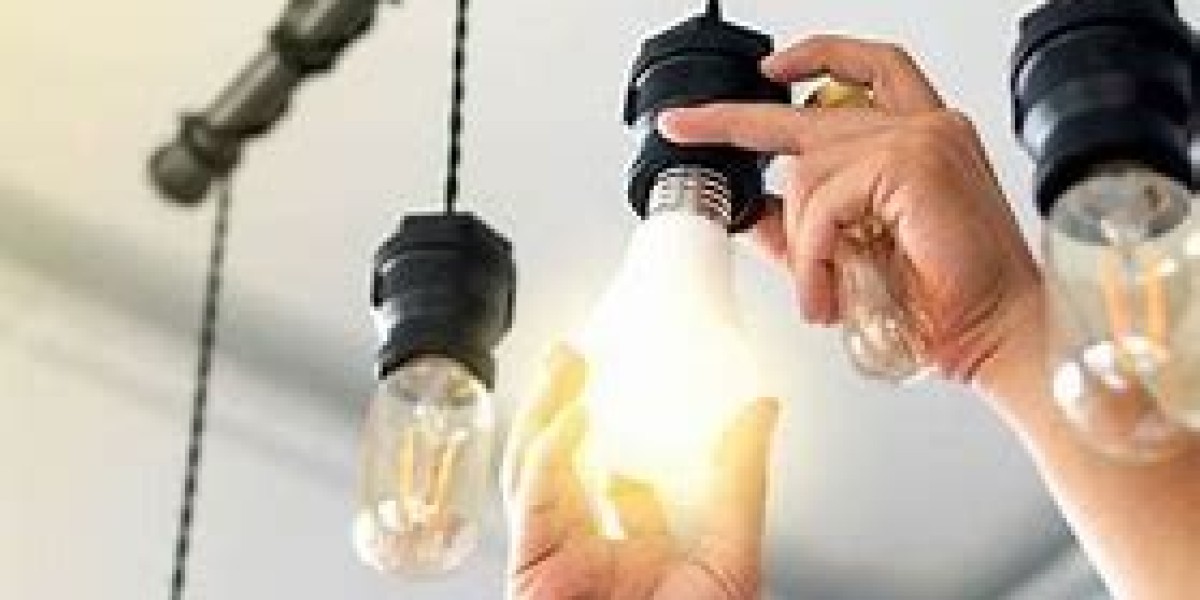In today's world, where energy costs are rising, people are constantly looking for innovative ways to reduce their energy consumption without sacrificing comfort, style, or performance. One of the most effective and efficient upgrades that can help achieve this goal is switching to LED (Light Emitting Diode) lighting. Not only do LED lights use less energy than traditional incandescent bulbs, but they also last significantly longer and provide better light quality. By making the switch to LED lighting, homeowners and businesses alike can expect to cut their energy bills by up to 50%, all while enjoying a modern and stylish ambiance.
What Are LEDs and How Do They Work?
LEDs are semiconductor devices that emit light when an electrical current passes through them. Unlike traditional incandescent or fluorescent bulbs, which use heat to produce light, LEDs produce light through a process called electroluminescence. This allows LEDs to be much more energy-efficient, converting more energy into light rather than heat.
When compared to incandescent bulbs, which are typically only about 10% efficient in converting electrical energy into light (the rest is lost as heat), LEDs are far superior. LED lights can have efficiencies of 80% to 90%, meaning that a significantly higher portion of the electrical energy is converted to light rather than heat. This makes them not only energy-efficient but also environmentally friendly.
The Financial Benefits of LED Lighting
One of the most significant advantages of switching to LED lighting is the potential for major energy savings. According to the U.S. Department of Energy, LED lighting can reduce energy consumption for lighting by up to 75% compared to traditional incandescent bulbs. The reduction in energy use can directly lead to lower electricity bills, particularly in households or businesses that have many lights operating for extended periods.
For example, let’s say you replace 20 traditional 60-watt incandescent bulbs with 9-watt LED bulbs. The total energy usage will drop from 1,200 watts (20 x 60W) to just 180 watts (20 x 9W). Over the course of a year, this reduction can save you hundreds of dollars, depending on the cost of electricity in your area.
According to a study conducted by the American Council for an Energy-Efficient Economy (ACEEE), homes that switch to energy-efficient LED lighting can save an average of $75 to $150 per year on their energy bills, depending on the number of bulbs replaced and usage patterns (ACEEE).
Additionally, because LEDs are more durable and last longer than traditional bulbs, you’ll also save money on replacements. While an incandescent bulb may last around 1,000 hours, an LED can last upwards of 25,000 to 50,000 hours, making it an excellent long-term investment.
Environmental Benefits of LED Lighting
Another compelling reason to make the switch to LED lighting is the positive impact it has on the environment. Traditional incandescent bulbs waste a significant amount of energy in the form of heat, which not only wastes electricity but also contributes to unnecessary CO2 emissions. In contrast, LED lights use a fraction of the energy and are 100% recyclable, making them an eco-friendly alternative.
Moreover, because LEDs consume less energy, they reduce the overall demand for power from power plants, which is often generated from non-renewable sources like coal, oil, and natural gas. This reduction in demand contributes to fewer greenhouse gas emissions, which can help combat climate change and reduce a household’s carbon footprint.
Improving Style and Performance with LED Lights
While many people are initially drawn to the cost-saving benefits of LED lighting, many are concerned that they may have to sacrifice the aesthetics or quality of their lighting. Fortunately, LED technology has evolved significantly over the past few years, and today’s LED lights come in a wide variety of styles, colors, and brightness levels, allowing them to suit almost any home or business decor.
LED lights are available in numerous shapes and sizes, from small, sleek recessed downlights to larger, decorative chandeliers and pendant lights. With the option of warm, cool, or daylight color temperatures, you can create the ideal atmosphere for any room, whether you prefer a cozy, intimate setting or a bright, vibrant workspace. Furthermore, LED lights are dimmable, providing you with complete control over the ambiance of a room.
Beyond aesthetics, LEDs offer excellent performance. Their light output is steady and flicker-free, making them ideal for tasks that require good visibility, such as reading, cooking, or working. The instant-on feature of LEDs also eliminates the need to wait for a bulb to warm up, a common issue with some fluorescent lights. Additionally, because LEDs don’t emit UV light, they are safer for sensitive items such as artwork, fabrics, and furniture that could otherwise fade or degrade from prolonged exposure to UV rays.
Cost Comparison: Traditional Bulbs vs. LED Bulbs
When considering a switch to LED lighting, many consumers are concerned about the initial cost of purchasing LED bulbs. While it’s true that LED bulbs typically cost more upfront than incandescent or fluorescent bulbs, the price difference has steadily decreased in recent years. In fact, the cost of LED lighting has fallen by more than 85% over the past decade.
To put this into perspective, the average cost of an LED bulb in 2010 was approximately $40, whereas today, you can find high-quality LED bulbs for as little as $3 to $10. When you factor in the long lifespan and energy savings, the initial investment in LED lighting pays for itself within a short period of time.
Additionally, many utility companies offer rebates or incentives to encourage consumers to switch to more energy-efficient lighting options, further reducing the upfront costs. This can be a significant benefit, as the savings can help offset the purchase price.
Real-Life Examples of Savings with LED Upgrades
To see the impact of switching to LED lighting firsthand, consider some real-life examples. A study conducted by the California Energy Commission found that households that replaced their incandescent bulbs with LEDs reduced their lighting energy use by an average of 80% (California Energy Commission).
Similarly, large businesses that have made the switch to LED lighting have reported significant cost savings. One example is Walmart, which has invested heavily in LED lighting across its stores. As a result, the company has seen a reduction in its energy usage for lighting by up to 40%, saving millions of dollars annually on electricity costs.
The Bottom Line: Cutting Your Energy Bill in Half
When you consider all the benefits of LED lighting—energy efficiency, cost savings, environmental impact, and superior performance—it’s clear that upgrading to LED bulbs is a smart move for any household or business. By making the switch, you can reduce your energy bill by up to 50%, without sacrificing style, comfort, or lighting quality.
Moreover, LEDs are a future-proof investment. As technology continues to improve, LED lights are becoming even more efficient and cost-effective, meaning that those who make the switch today will continue to reap the benefits for years to come.
In conclusion, if you’re looking for an easy and effective way to reduce your energy costs while maintaining high-quality lighting, consider upgrading to LED lights. The combination of financial savings, environmental benefits, and improved performance makes it a win-win for anyone looking to lower their electricity bill without compromising on style.



